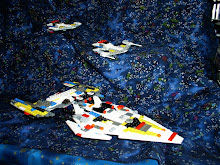Some add-ons will place a Search Bar below the Address Bar in Internet Explorer. (Firefox has a Search Bar to the right by default.) The Search Bar is what you want to use if you don't know the exact address of a web site. You might use terms like "blue mini-vans" or "plaid fabric with gold" in your searches. Google is one of many search engines. Bing, Yahoo, Excite are also search engines. But, the Search Bar does come with some risk. Make sure that the web site you are going to is the one you want. Some scammers will try to get you to go to places that are slightly misspelled. "golden1credit" is not the same as "goldenlcredit" for example. Internet Explorer comes with the Smart Screen Filter that is supposed to check out web sites before you go to them. Google has a double chevron pointing to right indicating that you can see a thumbnail of the site before you go to it. Then you can get a preview of the site.
If a page is using HTTPS (secure), the Address Bar will turn green and have a closed lock in the address
In the upper right corner are the Minimize, Maximize and Close buttons. Minimize sends the window to the Taskbar, maximize makes it fill the screen and Close exit the program. You can also use the F11 key to engage kiosk mode which makes IE fill the whole screen.
Also in the upper right are the Home, Favorites and Tools buttons. They are the house, star and gear. If you click on the Home button, IE will take you back to your Home Page. If you right-click on the Home button, it will give you options for displaying various toolbars, locking those toolbars, showing tabs on a different row (below the Address Bar), and adding or changing your Home Page. You can have more than one Home Page and each will open in its own tab.
The Favorites button (star) will allow you to add the current page to your Favorites and in that window, arrange the Favorites in an order you prefer. The "Add to Favorites" button has a little arrow that gives you more options to import and export your Favorites and to organize them.
The Feeds button is for setting up RSS feeds, but there's not much call for those anymore.
The History button is for looking at sites IE has visited before, but you may not have Favorited them. You can look back, up to three weeks, and see where your browser has been and go back to those sites.
The Tools button (gear) contains options to print, zoom, safety settings, view files that have been downloaded, manage add-ons, developer tools, pinned sites, Internet Options, and About IE. Also, this is where the File menu has moved to. Seems to be mostly for things that didn't fit anywhere else: Add site to Start Menu, Full Screen (F11 mode), Save As, Find on this page, Suggested sites, and Caret Browsing (puts a moveable cursor on the screen to select text). The Internet Options item is the same as the one from the Control Panel where you can change your Home Page and delete the Internet temporary files and history.
If you have the Status Bar turned on, it will be at the bottom of the screen and shows you what files are being displayed for the web page you are loading and the address of a link if you hover the mouse. It also offers a place to change the zoom settings, which work just like the
In the upper left, IE has Back and Forward buttons. If you right-click (remember, right-click on everything, sometimes you'll get a hidden menu of things you can do), you will get a list of the web sites IE has visited and you can click on the one you want to go back, or forwards, to load again.
Some keyboard short cuts:
History:
Home:
View Favorites:
Tools:
View downloads:
Change zoom:
Set zoom to 100%:
Bring up File menu:
Control

